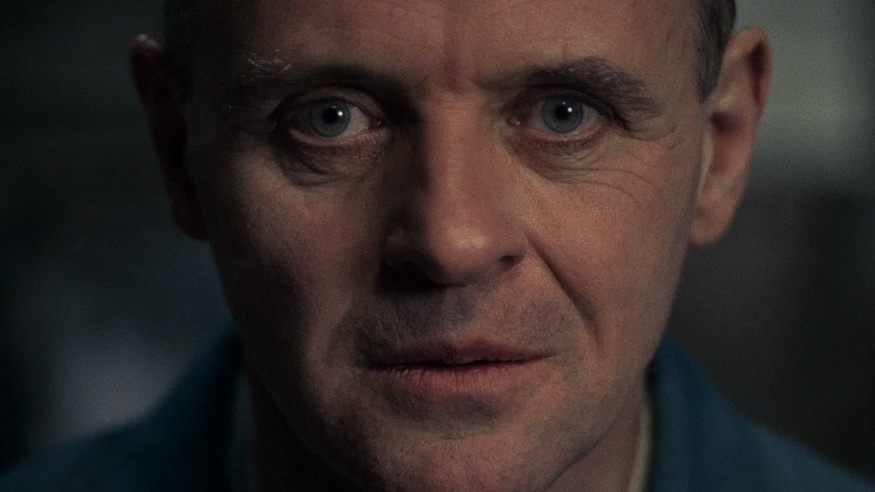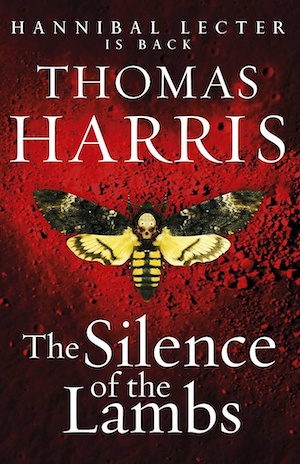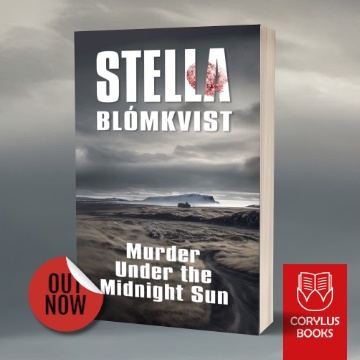

Has there ever been a more recognisable, more evil villain than Dr Hannibal Lecter? Not many of us will be able to shake the image of Anthony Hopkins’s eyes behind that facial restraint, nor the sound of his terrifying, slithering slurp. I’m also guessing that the popularity of the name Clarice declined sharply after Jodi Foster’s 1991 portrayal of the fresh-faced FBI agent, Clarice Starling.
The seven Oscars The Silence of the Lambs won attest to its genius and confirm the ground-breaking nature of the film. But, in order for the film to exist, there had to be a source, so let’s go back to the beginning with the Hannibal novels by Thomas Harris.
Dr Hannibal Lecter made his grisly debut in The Red Dragon (1981) as a fairly minor character. It also introduced us to FBI boss, Crawford, who would return in The Silence of the Lambs. Will Graham, a retired FBI agent with an aptitude for investigative profiling is the main protagonist in this first Hannibal novel. Lecter leaves him injured and scarred, but Graham also plays a key role in the cannibalistic killer’s imprisonment. The psychopath Graham wants to catch is the sadistic Francis Dolarhyde, who murders entire families and is known as the Tooth Fairy due to his habit of biting his victims. Although Lecter is a peripheral character in the narrative his presence is unmistakably menacing.
The Silence of the Lambs (1988) depicts Lecter in all his full-fledged disturbing yet ingenious glory. He steals the show even though the true hero of the story is Clarice Starling. This brings us to one of the main reasons why The Silence of the Lambs stood out at the time and continues to serve as a template for numerous other series, books and movies. Harris crafted a strong-yet-vulnerable female protagonist in Starling. Despite being the lamb to slaughter, she faces her past and present fears head-on. She accomplishes this despite a hostile, misogynistic workplace where she is up against sexist male colleagues as well as the Institute for the Criminally Insane’s head, Dr Chilton.
The only person who appears to sympathise with her is the most unlikely one of all – Dr Hannibal Lecter. When a fellow inmate makes a lewd remark towards Starling, he soon finds himself dead and tongueless thanks to Lecter. Maybe a little off-target, but at least he shows some support.
Graphic violence

While there is blood on the page and on the screen, instead of focusing solely on graphic violence, Harris and director Jonathan Demme explored the psychological aspects of the story, turning the slasher trope on its head. Here, the woman fights the monster and becomes the hero. Starling’s character inspired an entirely new wave of authors. Crime writers Kathy Reichs and Karin Slaughter would create female main characters who, using forensics and/or profiling, confront and catch serial killers with their own wits, intuition and skills. The ensuing few decades would see the hatching of numerous literary Starlings.
The relationship between Starling and Lecter may be the primary subject of The Silence of the Lambs, but Buffalo Bill, the caricatured cross-dresser, created a stir of his own. Harris insists that the character wasn’t intended to be transgender but rather a misguided madman, however the damage had already been done with the negative perception of the character imparted to transgender people.
Of course, Buffalo Bill is reminiscent of another cross-dressing serial killer from two decades earlier: Norman Bates, and the 1950s serial killer Ed Gein, upon whom Bates was based.
Buffalo Bill too was inspired by the real-life Ed Gein, but where did Lecter’s character originate? Some sources claim Harris was inspired by a murderous surgeon from Mexico whom he met while working as a reporter in the 1960s. Harris met Dr Salazar, a diminutive and refined man who dismembered his victims and placed them in boxes, while interviewing another mental patient.
Some topics are difficult to digest, even for the most seasoned and resilient crime reader and moviegoer. High on the list is cannibalism and Lecter’s appetite undoubtedly dialled up the ick-o-meter. Yet Lecter’s ability to get into the head of Starling and poke around in her psyche is far more horrifying than his unique dietary preferences.
Forensics and profiling

The Silence of the Lambs amplified our morbid and inexplicable fascination with serial killers, forensic investigation and profiling. It paved the way for highly successful series like CSI, Criminal Minds, Mindhunter, True Detective and Dexter. Among them, Dexter comes closest to the level of violence and pitch-black humour that Lecter is known for. Remember his deadpan remark about eating his victim’s liver with fava beans and nice Chianti? When choosing his victims, Dexter follows a moral code similar to that of Lecter, though Dexter draws the line at having them as appetisers.
Numerous films about serial killers soon followed. Without Silence of the Lambs laying the groundwork and preparing audiences, films like Se7en, Bone Collector, Copy Cat, Zodiac, Fallen, Natural Born Killers, Summer of Sam and The Talented Mr Ripley might not have been as successful.
Meanwhile, Harris’s books have influenced many future crime writers including SA Cosby, Vaseem Kahn, Steve Kavanagh, Rick Mofina, Luke Delaney, Mark Billingham, Michael Robotham and Mark Edwards. Even Stephen King, the King of Horror, is a longtime fan, calling Silence of the Lambs “…one of the two most frightening popular novels of our time, the other being The Exorcist.”
Have readers become desensitised to serial killers as a result of the abundance of crime novels published since The Silence of the Lambs? Such novels abound, whether written by Danya Kukafka, Jeffery Deaver, Jo Nesbo, MW Craven, Jeff Lindsay, Caleb Carter, Lauren Beukes or Tim Dorsey. Stephen King is no stranger to the serial killer narrative. One of his recent novels, Holly, features two elderly cannibals. Fellow American writer, Chelsea G Summers, introduces a female killer who is a chef with more than risotto on the menu in A Certain Hunger.
Following The Silence of the Lambs, Thomas Harris continued the Hannibal series with two additional novels, Hannibal (1999) and Hannibal Rising (2006). The novels, like their film counterparts, were never quite as successful. The Silence of the Lambs was peak Hannibal Lecter and the Foster-Hopkins-Demme team’s on-screen success could not be replicated.
More recently, CBS attempted a spin-off series called Clarice which was cancelled after one season. On the other hand, the Netflix series, Hannibal, starring Danish actor Mads Mikkelson, has proven extremely popular, with an almost uncanny cult following. The influence of both book and film nearly 40 years later is remarkable, regardless of whether you are a die-hard crime-horror reader or a dedicated member of the Hannibal Lecter Fan Group.










I wish you had mentioned Thomas Harris’s inestimable book, “Cari Mora” (2019).
It’s far more colorful, very fun in some ways, and absolutely horrifying.